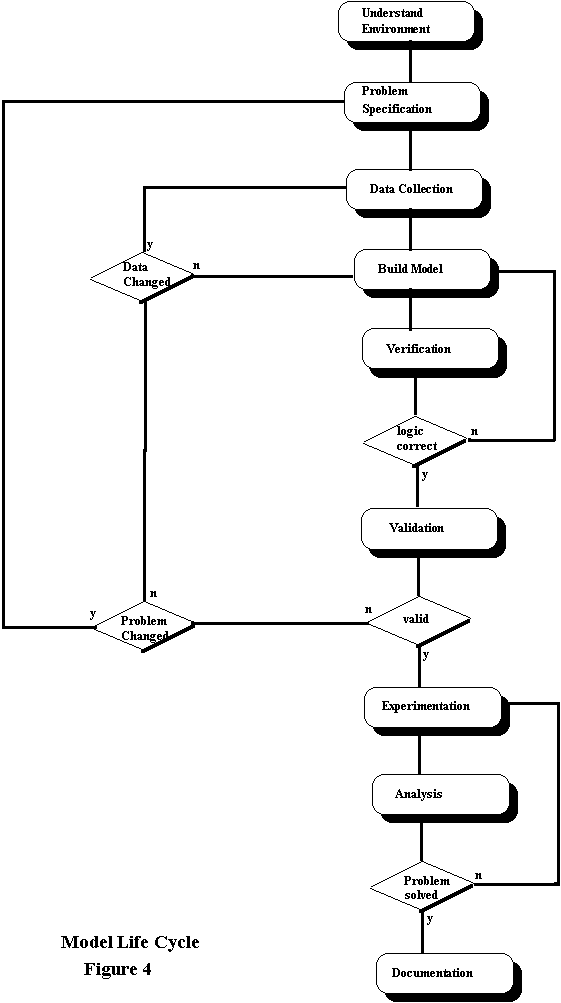1.3 MODEL DEVELOPMENT LIFE CYCLE
1.3.1 Development Phase
There are a number of criteria that are considered important during the development of a simulation model. A good model should be:
- simple to understand and explain to people who may have no or little understanding of computer simulation,
- goal or purpose oriented,
- robust and doesn't give absurd answers,
- easy to control - the implications of parameter change should be predictable and the model must not be oversensitive to small changes in parameter values,
- complete with regard to all significant factors,
- functional and exclude irrelevent factors,
- designed to be adaptive and easily modified,
- constructed in evolutionary steps.
3.2 Model Life Cycle
- Identify the problem. Precisely specify the purpose of the study. It is also useful at this point to identify the required resources and to define the boundaries, both spatial and time, of the model.
- State the objectives of the model. This should be done in a clear unambiguous and formal manner.
- Formulate the model. A graphical model of the logic should be produced utilising an Activity Cycle Diagram. It is essential that the model meets the objectives
- Identify and collect the data. Identify and define the variables to be sampled. Collect the data
- Build the model
- Verify the model. Check that the model performs as intended.
- Validate the model. Check that the model mimics the real system.
- Experimentation. Conduct experiments to meet the objectives of the study. Carefully check the significance of the results obtained.
- Report production. The system must be thoroughly understood. Test the sensitivity of the model to various changes.

